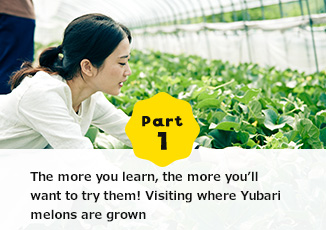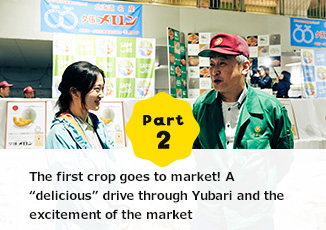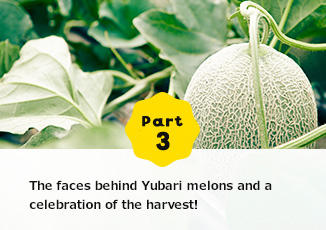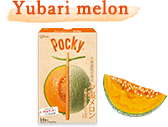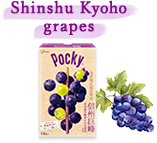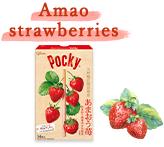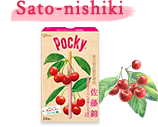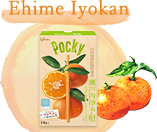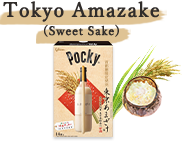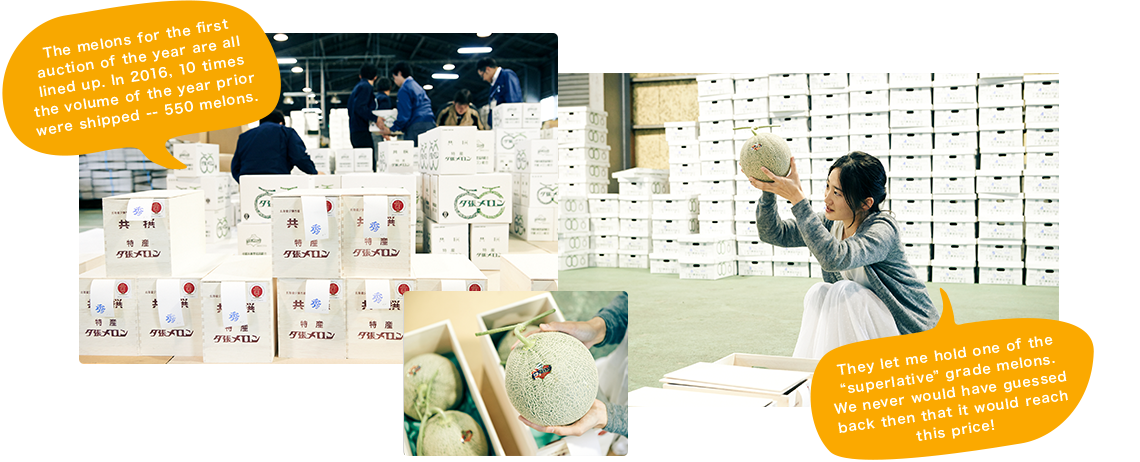
Yubari Melons have juicy fruit and a sweetly delicious aroma.
This is a special fruit that is the result of locals’ labors.
2016 actually marks the 56th anniversary of the Yubari Melon. It is a longstanding fruit brand today.
Behind the lovely and delicious image of these melons is an unprecedented amount of work, passion, and commitment.
Let’s set out on a journey to learn about Yubari Melons! These melons continue working hard to become a trusted brand.

My image of Yubari Melons thus far was something only eaten on special occasions.
Time to learn some of the backstories of crafting this special fruit!
I love looking at artisans and craftspeople in profile as they go about their work. I love local trips and delicious food, so I am really looking forward to who I will meet in Yubari as a first-time visitor.

Yubari Melons begin production in winter.
In early summer, when I visited Yubari amid the lush new greenery, I was endless rows of plastic greenhouses for the melons.
Takahiro Kobayashi’s family has been producing Yubari Melons since his father’s days. He told me, “There are 18 quadrants for the plastic greenhouses, with the timing for shipment of each product shifted in succession. We produce close to, I think, 90,000 melons a year.â€
In other words, Yubari Melon production starts as early as winter, when the seedlings are carefully prepared.

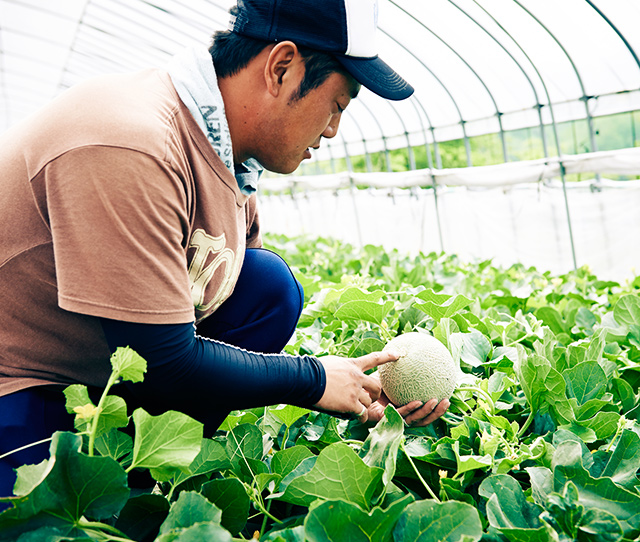
It’s just before the Yubari Melons ship!
Let’s check out the fields, bursting with melons!
From between the undulating waves of green leaves peek out Yubari Melons, waiting to be picked.
Apparently, farmers knock on the bottom of the melon or hold it in their hand to check whether it’s ready. Mr. Kobayashi says, “This comes down to experience, after all.†He selects melons unhesitatingly based on his long xperience.
He told me some of his melons would be going out for the first auction of the season this year.
The peak period for shipment of Yubari Melons is June through July.
It is around this time that the most melons are on the market, so the prices are the most accessible.
The Kobayashis’ field is tended to by the Kobayashis, Mr. Kobayashi’s mother, and his brother and his brother's spouse. They also have part-time workers help them as needed, for a roster of about ten people. Naturally, all of the greenhouses are managed by hand!
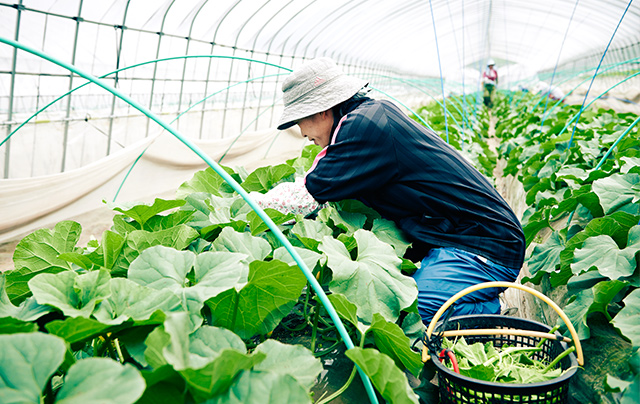
Yubari Melons carry an image of elegance and refinement Seeing the fields,
it was clear to me that no effort is overlooked when it comes to sewing the seeds,
planting the seedlings, and on through every other step.
During our interview, a sudden downpour occurred.
The farmers rushed close the windows of the open greenhouses, ensuring that the temperature not drop too much.
Every greenhouse has to be checked and attended to. Otherwise,
the rind of the melon hardens and the attractive craquelure pattern will not form.
I remember saying, “It’s almost as if you’re caring for a small baby!†They replied,
“That’s exactly it -- it takes quite a lot of care and attention.â€
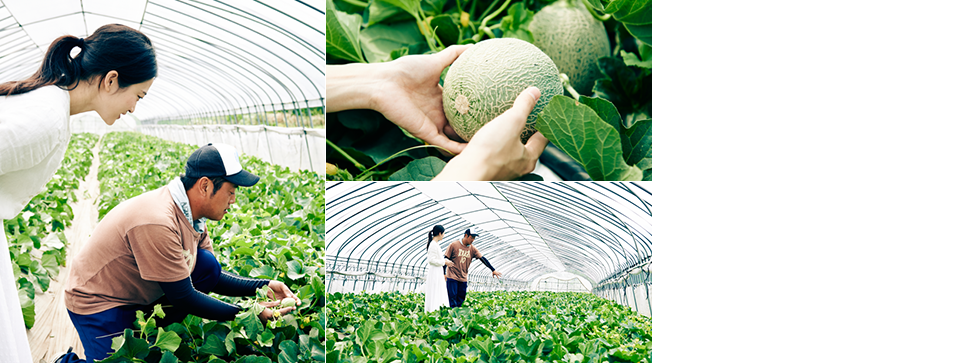

The delicate effort and time spent have preserved that quality through the years.
Mr. Kobayashi, a second-generation farmer, says he watched his parents growing Yubari Melons as a child and realized how challenging farm work can be.
Asked why he continues producing melons in spite of that, “Only by going through all of those steps can you create a good product that you can stand behind. Producing Yubari Melons every year, there’s never a point where we say, ’OK, good enough.’
We always want to improve upon them. There’s a desire there. It’s worth doing,†he says with a smile. The more I learn, the more I really want to reflect and sink my teeth into the melons and what they represent. We ended the day with a commemorative photo with the Kobayashis. These Yubari Melons, the product of their hard work, will soon be going to market.

Grafting
As you continue producing the same product in one region, harmful pathogens and pests targeting that crop grow each year.
To counteract this, they use seedlings with strong resistance to those harmful agents and graft the Yubari Melon stalks to them.
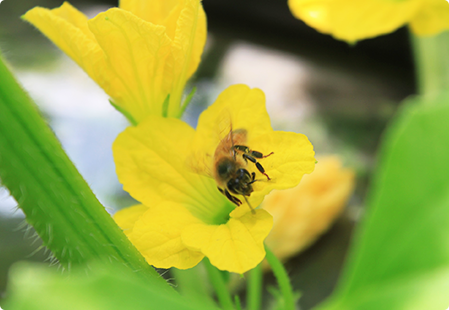
Pollination
A temperature between 20 and 25 degrees Celsius must be maintained, which is when honey bees are active. Otherwise, they will not properly pollinate the plants. The heat and cold are carefully regulated each day by humans to ensure that the bees can work comfortably.
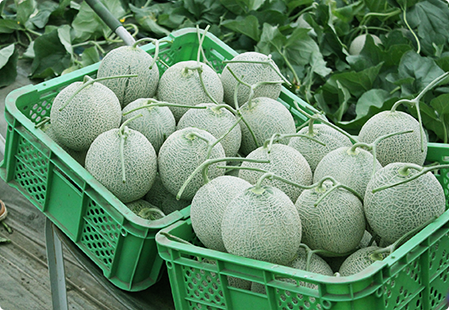
Harvest
Through the experience and intuition of the farmers, melons are selected such that they are precisely in their prime when they reach diners' tables.
Leaving behind an attractive vine is an important step in Yubari Melons! It enhances their looks when giving them as gifts.
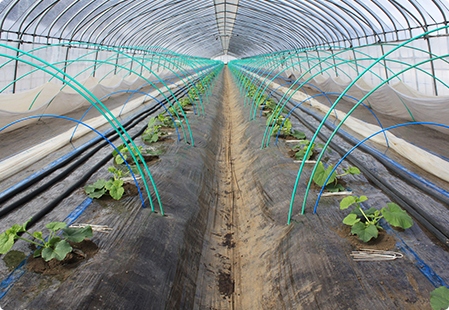
Planting
The new seedlings are then planted in the fields. Each is planted by hand in the ground, through which warm water runs, and they are lightly irrigated until they put down roots.
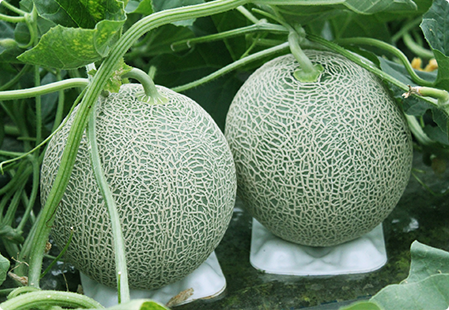
Just before the harvest!
Once about ten fruits begin to appear on the Yubari Melon seedlings, the two or three with the best shape are selected. White mats are placed underneath the melons to help them grow round. Once they are nice and plump, they become sweeter.
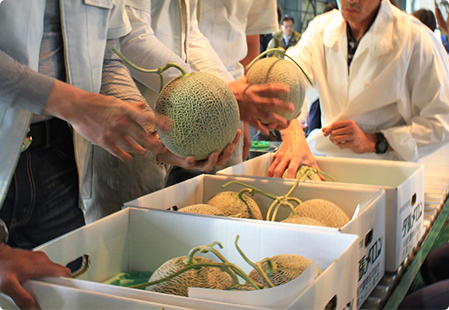
Mass sorting
Each melon conveyed to the sorting space from farms is subject to a stringent quality check across four levels: good, very good, superlative, and excellent.
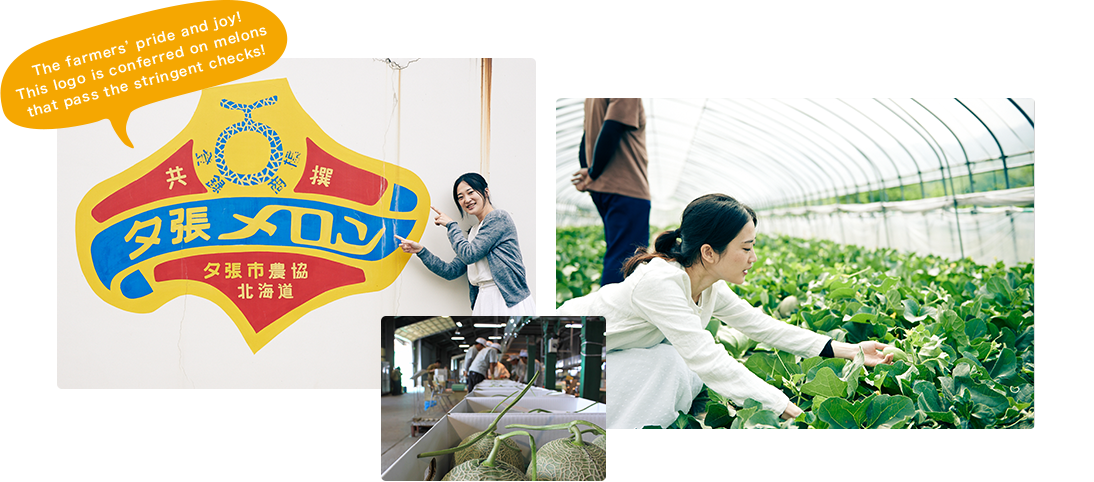
Getting the Yubari Melon designation requires passing strict checks!
The special logo employed is a mark of quality, attesting that the melons have been carefully curated.
Melons passing this test must have a properly round form and a Brix level of 10% or higher.
The craquelure pattern must be uniform and cover 40% of the surface, and the melon must weigh 1kg or more.
While these are fine to eat, they do not look aesthetically perfect, so they are excluded -- what exacting standards!
This is the kind of strict baseline you expect from Yubari Melons, which are frequently given as gifts.
Because producers hew to these standards, the Yubari brand is one consumers trust.
Yubari Melons begin production in winter.
When harvested, Yubari Melons are bluish-white. Over time, their color changes.
Yubari Melons are in fact ripened by bringing them home and leaving them at room temperature.
Once the stem droops and the melon takes on a yellow-green or yellow color, with a stronger aroma, it is ready to eat.
Isn’t this kind of like bananas? In that sense, this may be a common aspect of fruits grown in warm regions -- they ship before fully ripened.
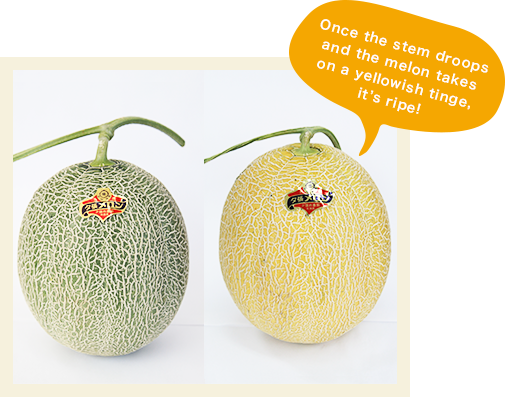
But why are melons, traditionally associated with warm regions,
so successful in growing in cold Hokkaido?
The answer lies in the hard work and experiments that Yubari did.
In 1888, coal deposits were discovered in Yubari, and the town prospered in coal mining.
Miners from around the country came here, and at one point the population exceeded 100,000 people.
However, as coal power shifted to oil and the town sought a new industry,
the types of crops that could be produced in Yubari, with its volcanic soil, were very limited.
The farmers soon felt agriculture was going to be squeezed out!
With a sense of urgency, the farmers and agricultural cooperatives came together as a town to search for a new local product.
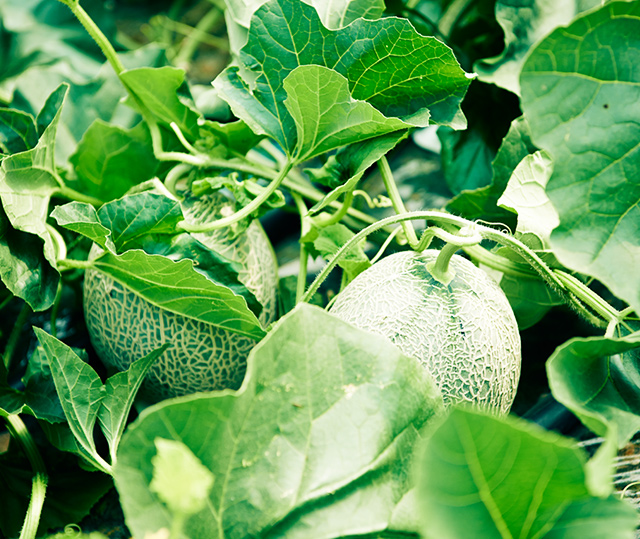
In 1957, they discovered “Spicy,†a melon that grew well in the soils of Yubari, which filter water well. Over time, this melon was evolved into the Yubari Melon.
The Spicy melon was not sweet, but they turned to various growing regions throughout Japan to experiment with cross-breeding it with other types of melon. Finally, the “Yubari King,†as it was known, came about.
These would eventually become Yubari Melons!
In the early days, apparently, they finally succeeded in getting a sweeter melon, but the seedlings died from the cold, or they failed to bear fruit.
Apparently the farmers tried everything, like placing the seeds in stomach warmers to heat them up, or covering the seedlings in several layers of plastic, doing all they could to plant them.
After much effort, they finally had the melons growing. Seeking to improve their quality and value, they began instituting guidelines for the strict culling and selection of only the best melons. While it seems a shame to cull the fruit after so much effort, this process of picking only the best of the best has enabled Yubari Melons to increase in value and become a true brand-name fruit.
In late 2015, the fruit was the very first one to earn the special designation GI (geographical indication) of the Ministry of Agriculture, Forestries, and Fisheries as a certified brand-name product of high quality.
These efforts to preserve the brand, which remains alive and well today, are owed to the faith and conviction the early growers had and the trust they built in their brand.
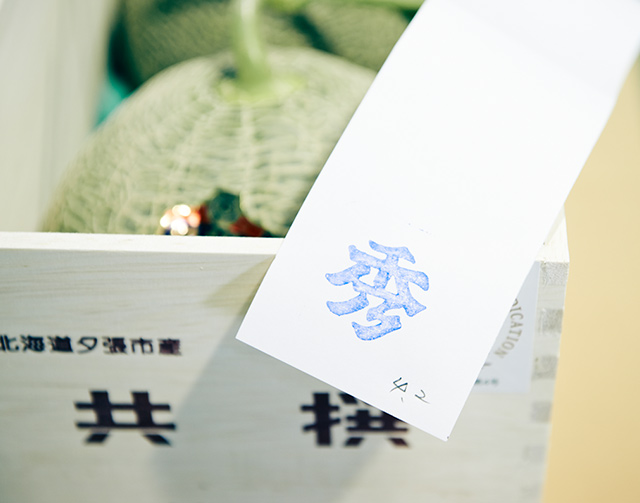
This unique product, the result of Yubari’s climate and locals’ passion, finally arrives on diners’ tables.
The first pick of melons from around Yubari goes to JA’s culling site, where they are further inspected and separated.
The melons are subject to stringent checks and then boxed before being loaded onto trucks. The first auction is tomorrow! Mr. Kishita, a director with JA, showed me the basics of the sorting process. I asked him what his take on this initial shipment was. I still remember how effusively he said, “Like every year, it’s at this moment where you get the feeling that the season has really begun.
This year, there was minimal snow, and the temperature was warm -- perfect for quality. Will this mean a new high record at auction? That was Mr. Kishita’s guess.
The prices at the initial auction are kind of a “celebratory†price. Even so, you won’t find fruit fetching these prices anywhere else. Just why is that?
And just what do consumers think of the Yubari brand, painstakingly developed through the trials and tribulations of early farmers? Find the answer in the next installment!















